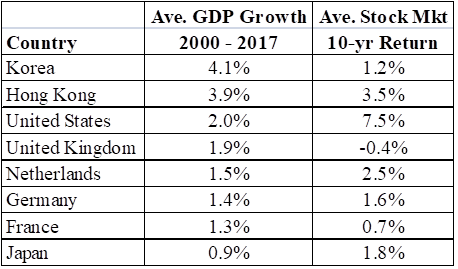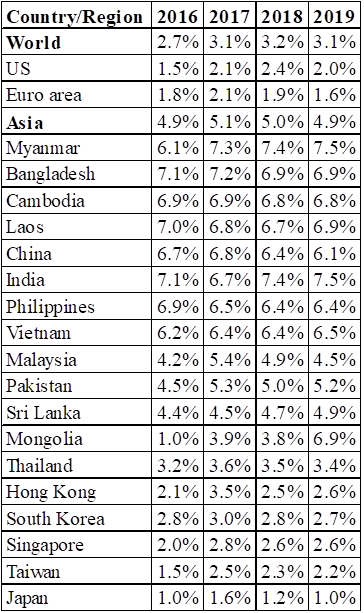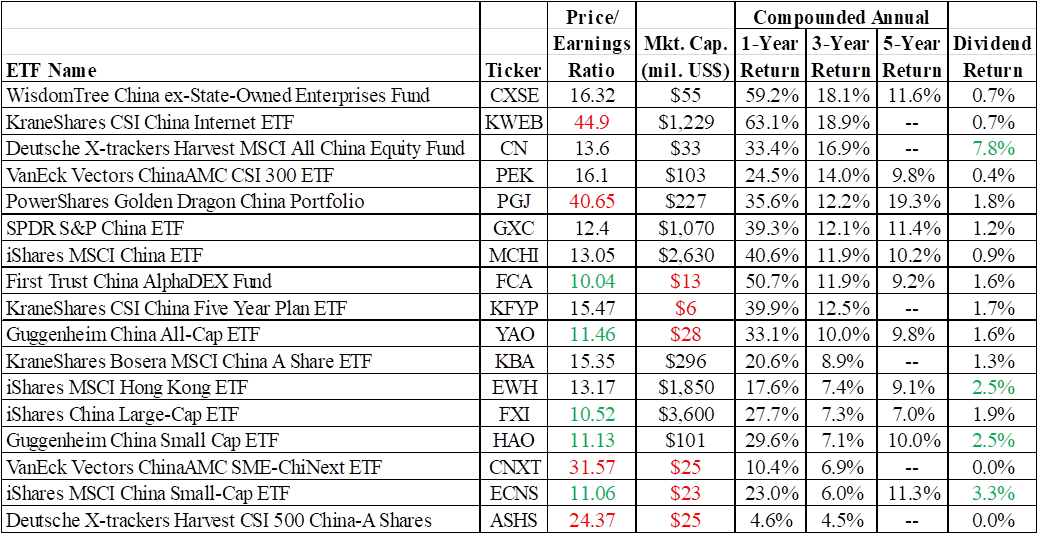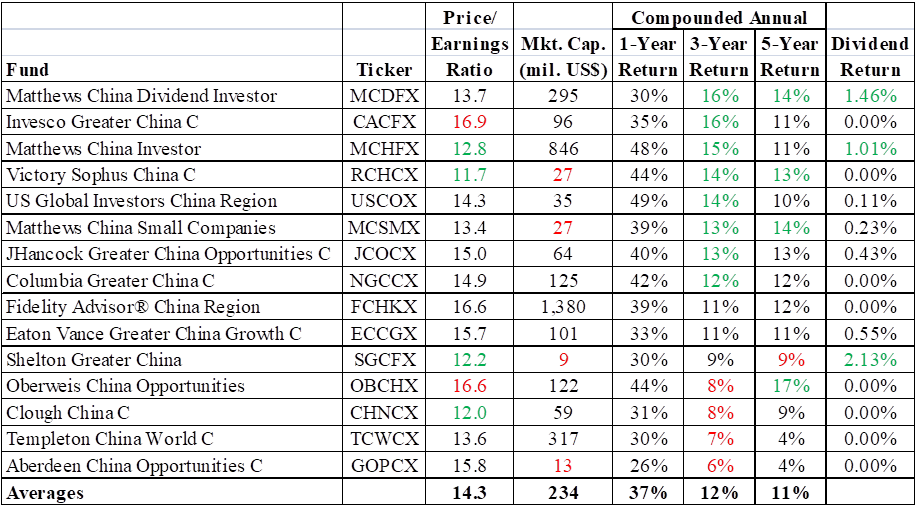Introduction
In a recent piece, I made the case for investing in emerging markets. Upon further reflection and research, I make a more specific recommendation: you should hold Chinese equities in your portfolio. Details of my reasoning and specific investment suggestions follow.
Do GDP Growth Rates Matter When Buying Equities?
Intuitively, one might think, ceteris paribus, that equity investments in rapidly growing countries would yield higher returns than investments in slower growing countries. However, the Table 1 data, below, do not support this contention: GDP growth rates are not correlated with stock market returns. This does not mean that growth rates are not important. It simply means that in reality, all things are not equal and that factors other than GDP growth rates affect stock prices.
Table 1. – GDP Growth Rates and Stock Market Returns, Selected Countries

Sources: IMF for GDP Growth, iShare ETFs for Market Returns
That all having been said, it is still informative to look at GDP growth rates. This is done in Table 2, below, where Asian countries are ranked by projected 2017 growth rates.
Table 2. – GDP Growth Rates, Selected Regions, Countries

The country that stands out on this list is China. Unlike other listed emerging nations, China is politically stable: the Chinese Communist Party is in control. And unlike India, China has made the infrastructure investments needed for future rapid growth. But there are other things that make Chinese equities attractive:
- It has a rapidly growing middle class with growing income.
- Historically, the Chinese have invested in real estate and not equities. That is changing and as it does, the demand for Chinese equities will grow.
- Domestic Chinese shares have started to be added to the MSCI and other indices, thereby increasing the demand for Chinese securities further.
- Starting next June, MSCI investors will be able to buy a piece of the Chinese market via funds. Index funds and ETFs that track the MSCI Emerging Markets Index will add these stocks to their portfolios to better mimic the index’s moves.
- This latest step in opening up China’s market sets the stage for a day when American and other foreign investors will have access to a full menu of Chinese domestic stocks. Funds run by portfolio managers will also be adding some A shares to their list of stock holdings.
So What to Buy?
Unless you have some valuable inside information (highly unlikely), don’t buy individual stocks. A selection of Chinese ETFs appears in Table 3. I have listed positive numbers in green, and worrisome numbers in red. High price/earnings ratios are troubling as are very small ETFs. The Xtrackers MSCI All China Equity ETF (NYSE:CN) is attractive with its high dividend rate.
Table 3. – A Selection of Chinese ETFs

I am not alone in believing that picking stocks in the US is close to being a random bet because new information is almost instantly reflected in stock prices. And studies have shown that the majority of mutual fund managers underperform their market indices. However, Chinese equity markets are not perfect. And as Chinese policies change, a plausible argument can be made that you should invest in a fund with a “seasoned” Chinese investor in control. For that reason, a selection of the leading Chinese mutual fund investors is presented in Table 4. Until now, they have had very limited access to equities listed on domestic Chinese stock markets. But they will be making their lists of what to buy when available.
Table 4. – Chinese Mutual Funds

Conclusions
China investments are worth considering. Sure, maybe Chinese equities “over performed” last year. But so did US equities. I plan to look very closely at Chinese ETFs and mutual funds for new investments.
I am not an investment adviser and nothing I say should be taken as a recommendation to buy or sell an asset.
